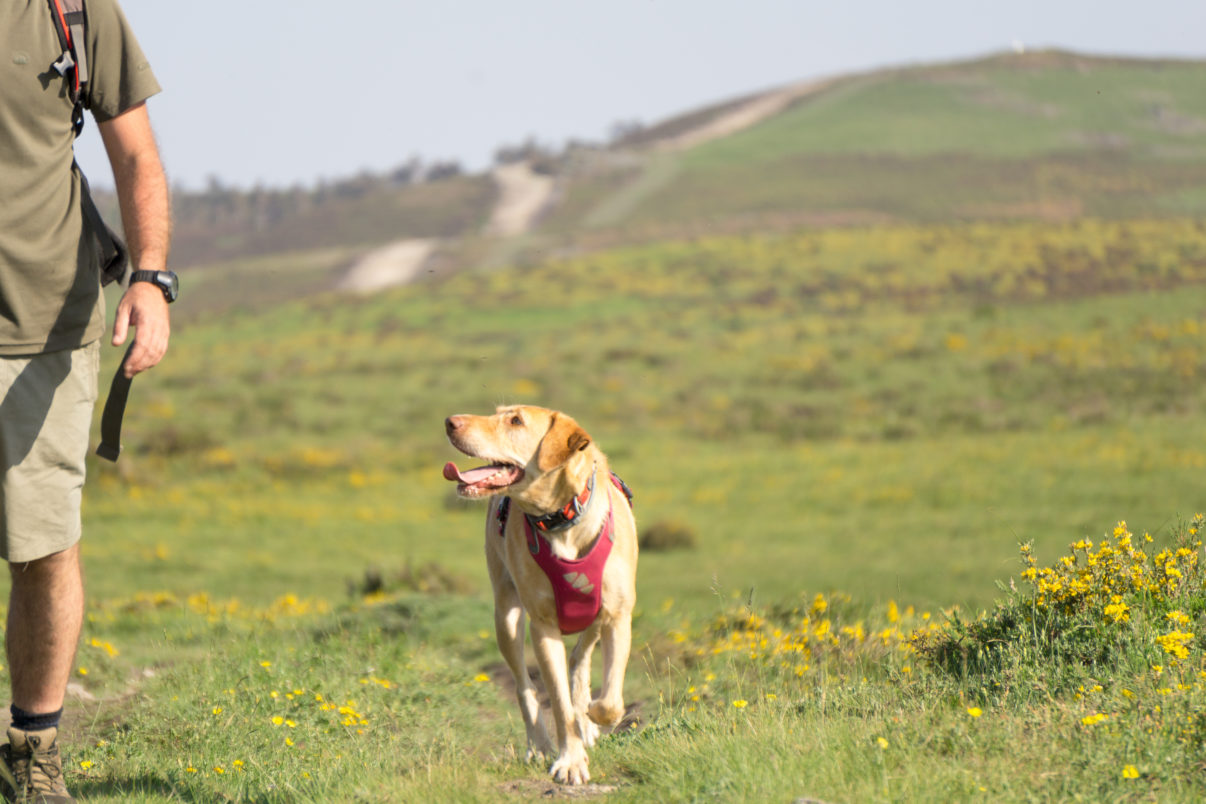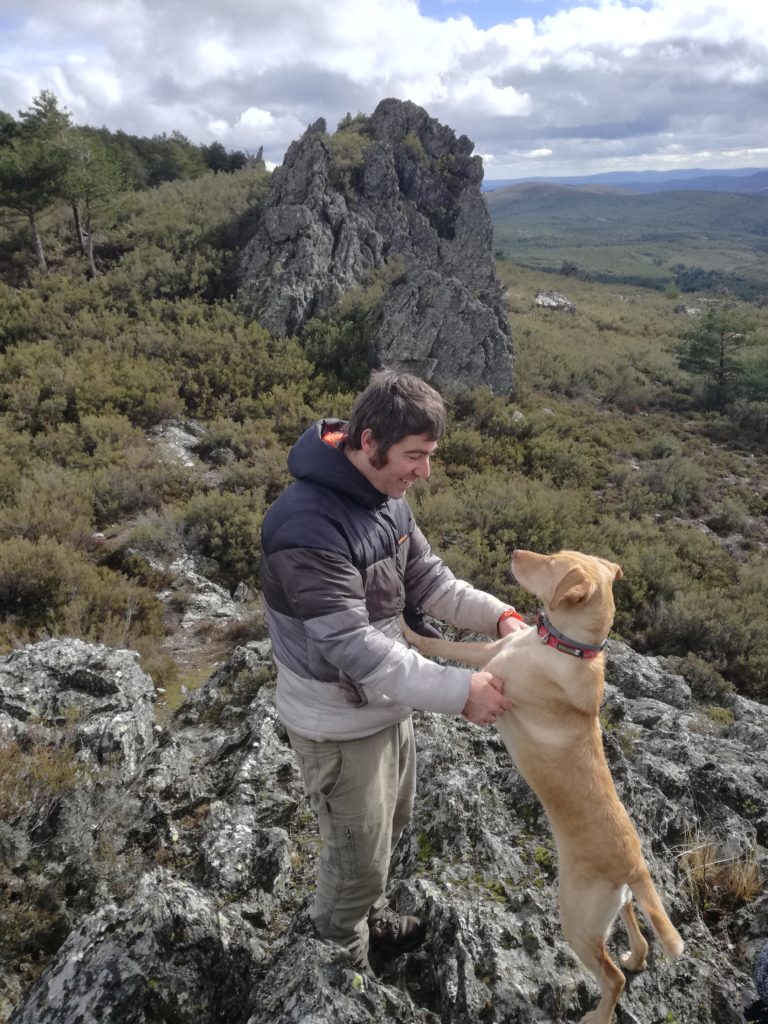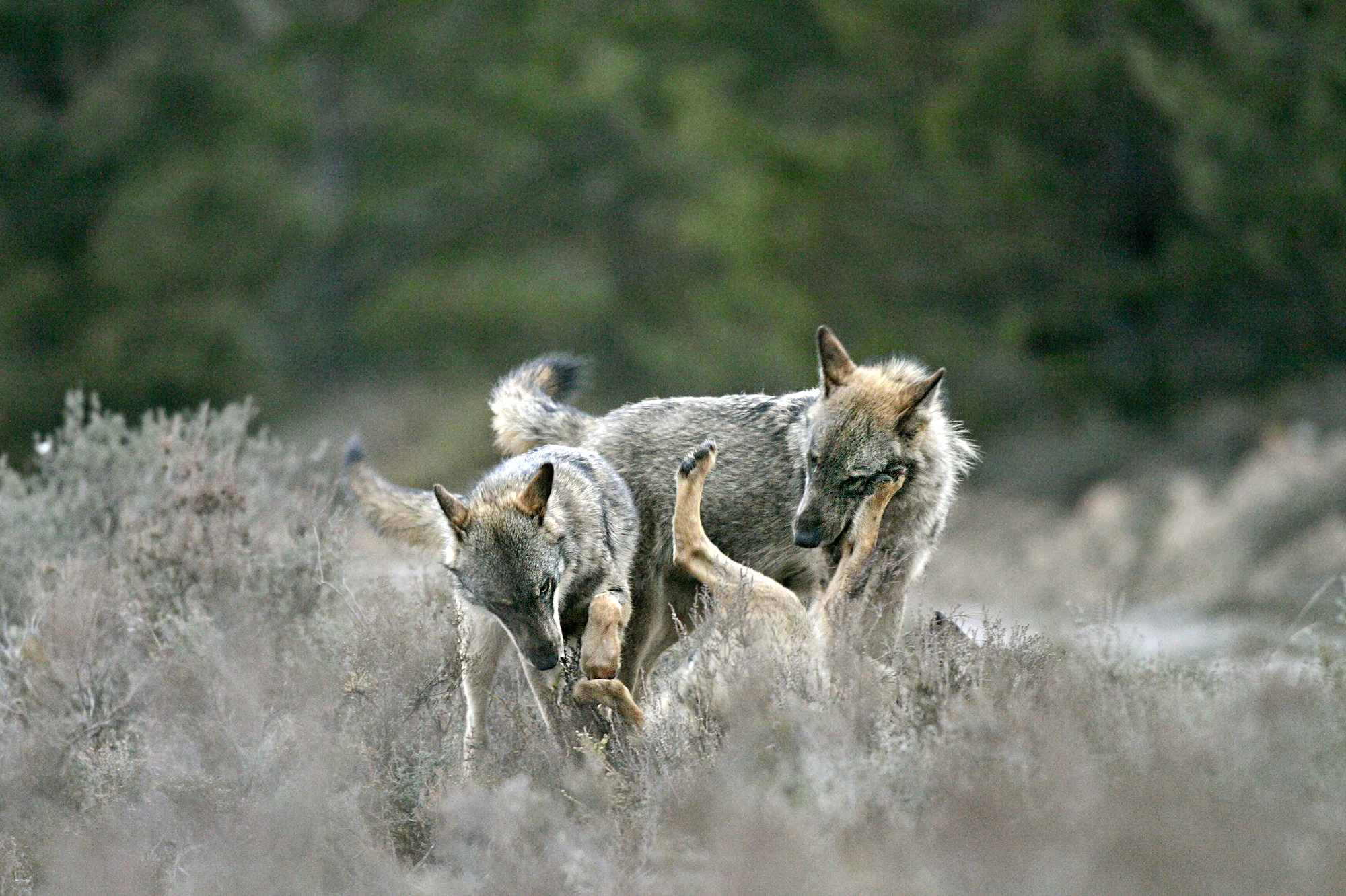By detecting and recording the presence of wolves in the Western Iberia rewilding area, Duarte Cadete and his dog Alice are playing an important role in supporting the comeback of this iconic yet endangered species.

Colleagues at work
It only takes a minute to see that Portuguese wildlife biologist Duarte Cadete and Alice – a six-year-old mongrel rescued from a public dog shelter- have an inseparable bond. Having worked together since 2015, the pair have come to rely on and trust each other intimately. When the dedicated duo are out surveying the Western Iberia rewilding area searching for the presence of wolves, this kind of close relationship is critical.
“The power of a well trained and experienced detection dog is immense,” says Cadete. “Whether wolves have been in the area recently or not, Alice will detect their presence. She’s my best friend and my colleague.”
Supporting wolf comeback
Working for Portuguese NGO Zoo Logical, a Rewilding Europe partner in the Western Iberia rewilding area, Cadete and Alice have been attached to the LIFE WolFlux project since it began at the start of 2019. The pair have been tasked with surveying up to 8000 square kilometres of territory south of the Douro River in northern Portugal, detecting the presence of Iberian wolves through their scat (faeces).
“Our work will provide a better understanding of how many wolves there are in the survey area, where they travel, their genetic make-up, and the areas which are most important for their conservation,” says Cadete. “This essential knowledge will help us to protect this keystone species and support its comeback.”
Critical role
The LIFE WolFlux project, which is co-funded by the European Commission and the Endangered Landscapes Programme, is coordinated by Rewilding Portugal, which oversees rewilding activities in Rewilding Europe’s Western Iberia rewilding area, focusing on the Greater Côa Valley and surrounding area. The aim of the project is to boost the connectivity of the Portuguese wolf sub-population south of the Douro River by minimising human-wolf conflict, reducing natural fire risk, increasing tolerance and developing a local nature-based economy.
In this regard, the work of Cadete and Alice is critical, with the scat samples and data collected by the pair used in several ways. The frequency and location of the scat will provide a more accurate understanding of wolf distribution, which will enable better decision making when it comes to wolf conservation.

A day in the life
Duarte Cadete and Alice are out in the field nearly every day of the week. Having such a huge area to survey means their work will probably last right through to the autumn (a similar survey will also be conducted at the end of the five-year LIFE WolFlux project). The pair tend to base themselves in the centrally located Moimenta da Beira municipality, a picturesque patchwork of small villages, vineyards, farmland and hills covered in forest and scrub.
A standard monitoring day begins with Alice’s morning walk and a comprehensive gear check. Cadete selects survey areas that contain potential wolf habitat, with monitoring routes typically following forest roads, agricultural paths and mountain ridges. Depending on the temperature and the frequency of sampling, the pair can travel up to 15 kilometres a day.
“Alice and I both love being outdoors,” says Cadete. “But it’s not about taking the dog to the limit. Dog safety and wellbeing are the priority. We both need to be in good condition to optimise detection and data collection. Sometimes we’ll be in the field for a whole day, sometimes half a day.”
Building a better picture
Following her adoption it took six months for Cadete to train Alice. When the pair discover wolf scat they follow a set routine, helping to reinforce that training.
“The first thing I do is reward her,” says Cadete. “Then we play and have loads of fun. Then I recheck the sample and record data, and sometimes deploy camera traps. The data we collect also helps others to deploy such traps.”
Some days Cadete and Alice detect 10 to 20 scats, others just one or two. Yet despite the frequency of detection, the biologist insists that it’s still too early to draw conclusions about trends in the local wolf population.
“We never see wolves during our survey work, but the animals are clearly there,” says Cadete. “But we need more surveying time to build an accurate picture of population dynamics.”
Promoting coexistence
Duarte Cadete has been working with the wolf subpopulation south of the Douro River since 2002. Having studied Iberian wolves for so long, he feels a close connection with these elusive yet resilient animals.
“I admire wolves immensely and find them endlessly interesting from a scientific point of view,” says the biologist. “The more you experience them, the more you respect them and appreciate that we have so much more to learn about them.”
While it is too early to say whether the essential data being collected by Duarte Cadete and Alice is evidence of an Iberian wolf comeback, the Portuguese is still optimistic about the future.
“People here need to get used to the presence of wolves again,” he says. “Good communication is vital in order to ensure humans and wolves can live alongside each other harmoniously.
“Alice and I are just one part of the jigsaw puzzle that is Iberian wolf conservation,” he continues. “We will keep going out into the field and doing our job, because a Portugal with a healthy wolf population is better for wild nature, and it is better for humans. As a holistic conservation approach, rewilding can help the wolf retake its place in Portuguese nature.”

Endangered status
The wolves found in Portugal and Spain are a sub-species of grey wolf bearing the scientific name Canis lupus signatus (the Iberian wolf). They were once numerous in Portugal, but habitat loss, conflict with humans and the disappearance of prey species meant that by the early 1900s the population was in decline. Protected by Portuguese law since 1988, today this iconic species remains in a precarious position.
Studies estimate that the Iberian wolf population within Portugal currently totals between 250-300 animals, occurring only in the north and centre of the country – corresponding to less than a third of the animal’s original range.
According to the last Portuguese census, carried out in 2002-2003, there are nine wolf packs south of the Douro River, representing approximately 14% of the wolf population in Portugal. Unfavourable conditions threaten the stability of these packs, affecting their breeding success and survival, as well as the connectivity between them.
Research carried out in 2012 revealed signs of a possible natural recolonisation by Iberian wolves along the Spanish-Portuguese border, with a consequent increase in connectivity between the region’s population clusters.
Want to know more?
- More about the LIFE WolFlux project
- Rewilding Europe’s work in Western Iberia
- Endangered Landscapes Programme
- Visit the website of Dear Wolf (a nature-based tourism, consultancy and training company co-founded by Duarte Cadete in 2014)